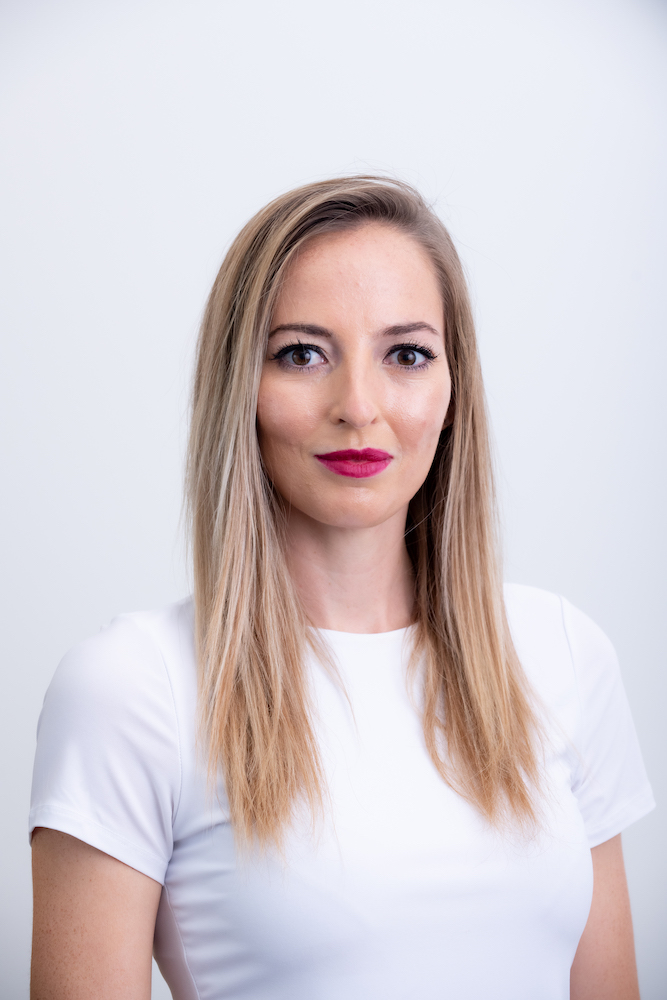Blazing new trails
Blazing new trails
When scientist Rachel Banks signed up for a course in biophysics as an undergraduate, she had no idea what to expect. Banks, and most people she knew, considered biology and physics to be worlds apart — she couldn’t imagine how the two would mix. But as Banks learned about how collaborations between biologists and physicists have advanced both fields she was hooked. Seven years later, she considers herself a biophysicist.
Now a full-time scientist at the Chan Zuckerberg Biohub, Banks is part of a team organizing the Biohub’s first Physics of Life Symposium.

Rachel Banks, Ph.D.
“Before that undergraduate course I had never thought about how aspects of physics — like energy and forces, for example — actually play a critical role inside a cell. I was just blown away by the idea that we could quantitatively understand biological systems,” she says. “Now with the help of the Biohub, I want to help get more people excited about these kinds of ideas.”
The Physics of Life Symposium will be held January 23 at the Biohub in San Francisco. The goal, says Adrian Jacobo, a group leader in the Biohub’s Quantitative Cell Science initiative, is to build community around the field, particularly within the Bay Area.
“We want to see who’s out there and who’s interested, and bring people together in a way that leads to us doing concrete things together, not just talking about it,” he says. “It doesn’t matter if you’re a biologist who’s looking for new tools to help with your experiments, a physicist who’s excited about biological applications of your work, or something in between — we hope you come!”
The event will emphasize talks by early-career scientists in order to promote idea-sharing and opportunities for collaborations on developing projects. The conference will also feature a plenary talk by Stephan Grill, a pioneer in the field of biophysics, who, in his role as director and group leader at the Max Planck Institute of Molecular Cell Biology and Genetics in Dresden, Germany, is working to define just how living matter differs from inanimate matter and how those differences allow living beings to form.
The organizing committee, which is co-led by Jacobo and Hernan Garcia, an associate professor of Genetics, Genomics, Evolution, and Development at UC Berkeley, includes eight other scientists from Stanford University and CZ Biohub with a range of backgrounds and career levels.
The Physics of Life organizing committee sees the relationship between biology and physics as a continuous spectrum rather than as two distinct and distant fields, and they hope their conference will encourage others to see it that way as well, says Garcia who is also a Biohub investigator. The separation between the two areas is more a matter of history and scientific culture than anything else, he argues. Maybe the division made sense a hundred years ago, but with today’s advances in research tools and computing, the lines between the two subjects are becoming blurred — and that’s a good thing, he says.
“The merging of these fields is being pushed by the revolution in experimental techniques that allows you to examine the inner workings of cells and organisms with high precision,” Garcia says. “In some cases, too, we’re only now inventing the mathematics and physics that allow us to create testable predictions about certain biological phenomena.”
Examples of those advances include super-resolution light microscopes — which help experimenters closely examine components of cells once thought too small to image — and microneedles so fine that experimenters can poke tiny pieces of cellular machinery to see what happens when forces act to change their behavior. Biophysicists hope to someday be able to write mathematical equations that predict gene expression based on physical laws of cellular activity in much the same way that physicists today can create equations to predict the exact output of an electrical circuit based on its wiring diagram. And in the Jacobo Group at Biohub, researchers are using ideas and tools from physics to study how local interactions between cells orchestrate the development of organs in the embryos of zebrafish and other animals.
The possibilities, though, are potentially endless, says Banks, who is eager to discuss novel applications of biophysics with current and new colleagues at the January symposium. And she feels that the CZ Biohub, which was specifically designed to unite the Bay Area’s leading academic institutions and to foster collaborations across diverse fields, is perfectly positioned to lead this effort.
“The Biohub’s unique mission enables us to bring together people who maybe wouldn’t have had a chance to collaborate before,” she says. “Considering that reach and all the advances happening right now in the fields of both biology and physics, we want to be part of bridging the two fields to really push our understanding and to be able to quantify biological systems in a way we haven’t before.”
The Physics of Life Scientific Organizing Committee will be accepting abstracts and RSVPs until January 9. Please click here to register.
Stay up-to-date on the latest news, publications, competitions, and stories from CZ Biohub.
Marketing cookies are required to access this form.